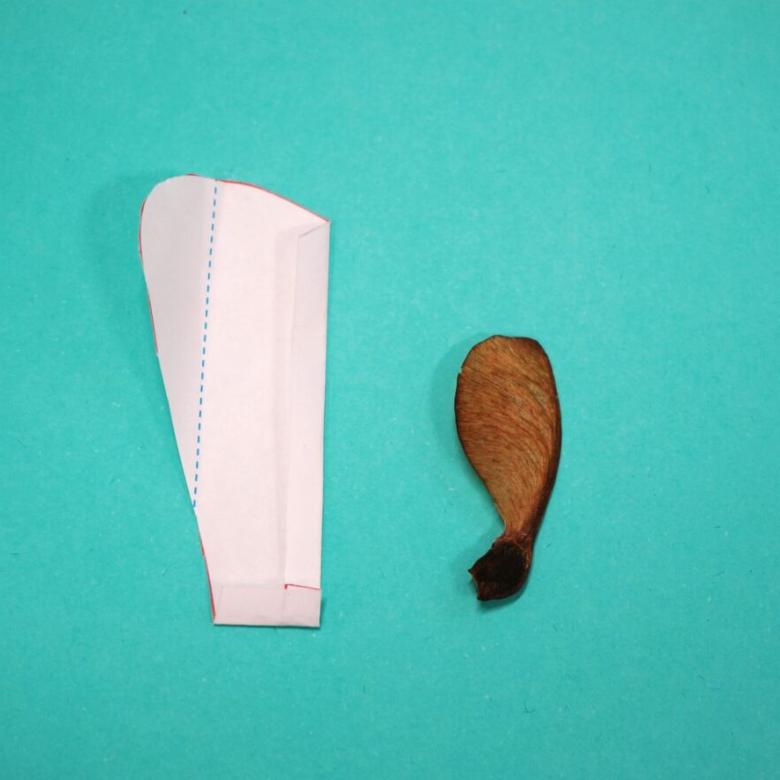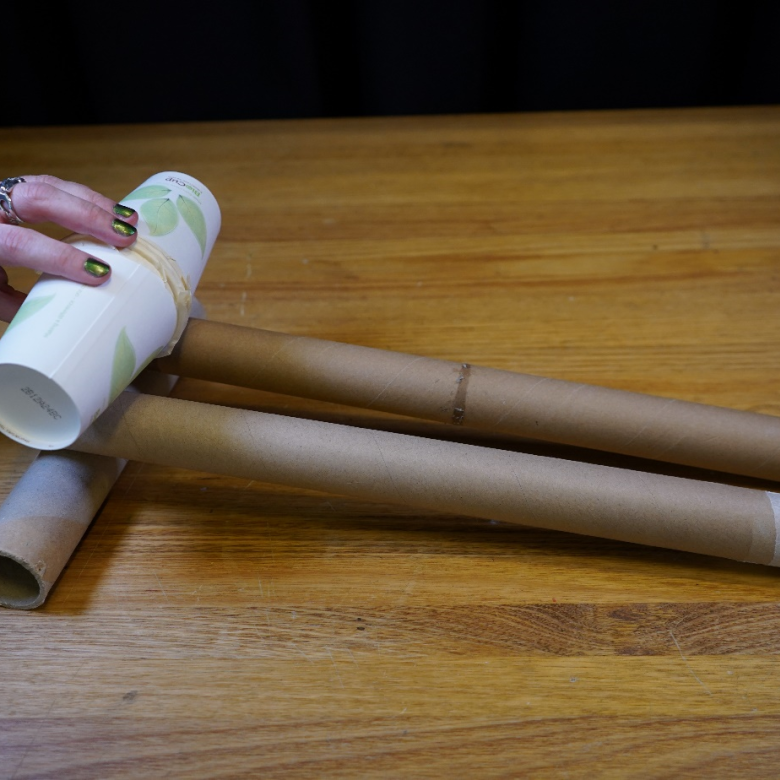You’ll need
- A 1-litre cardboard milk carton
- Scrap cardboard
- A wooden skewer
- Scissors
- Sticky tape
- Construction paper and markers for decoration.
What to do
- Use the scissors to make a flap from one face of the milk carton. Starting at the bottom of the milk carton, cut halfway up the two edges of the box, and then along the bottom edge to separate the flap. This flap will be the snapping jaw of your crocodile!
- It may be tricky to begin cutting into the milk carton, so ask a grownup for help if needed. - Carefully poke a wooden skewer all the way through the side milk carton below the flap. Wiggle the skewer around to that it can spin easily.
- Cut a circle out of some scrap cardboard. The circle doesn’t need to be perfectly round, just make sure it doesn’t have any sharp corners. This will be your cam.
- Pull the skewer back out of the milk carton. Carefully push the end of the skewer through the cardboard circle so that the hole is off-centre – about halfway between the middle and the edge of the circle.
- Pull the skewer out of the cardboard circle and insert it back in to one of the holes in the side milk carton.
- Push the pointy end of the skewer through the hole in the cardboard circle inside your crocodile’s mouth. Secure the circle to the skewer with sticky tape.
- Push the end of the skewer back through the milk carton so that it is poking out the other side again. Congratulations! You’ve just made a camshaft!
- Give your crocodile some teeth, feet, eyes, and a tail with the construction paper and markers!
- Spin your skewer cam shaft around and make your crocodile’s jaw snap!
Questions to ask
- What happens to the way your crocodile’s mouth snaps if you change the shape of the cam inside its mouth?
- What other animals or machines can you make with a camshaft?
What’s happening
Cams and camshafts turn rotational motion (round-and-round) into linear motion (up-and-down or side-to-side). As a cam rotates around a camshaft it pushes on a lever called a ‘follower’, making it move up and down. In this activity the snapping jaw of your crocodile is the follower.
Changing the shape of a cam, or where the camshaft passes through the centre of the cam, changes how far and fast the follower moves back and forth. For example, a camshaft closer to the edge of a circular cam will push the follower much further than a cam with its camshaft passing through near its middle.
Did you know
Cams don’t need to be circles to work. Differently shaped cams can make the follower move in unique up-and-down motions. Collections of many differently shaped cams all working together were used to build some of the earliest mechanical computers.








